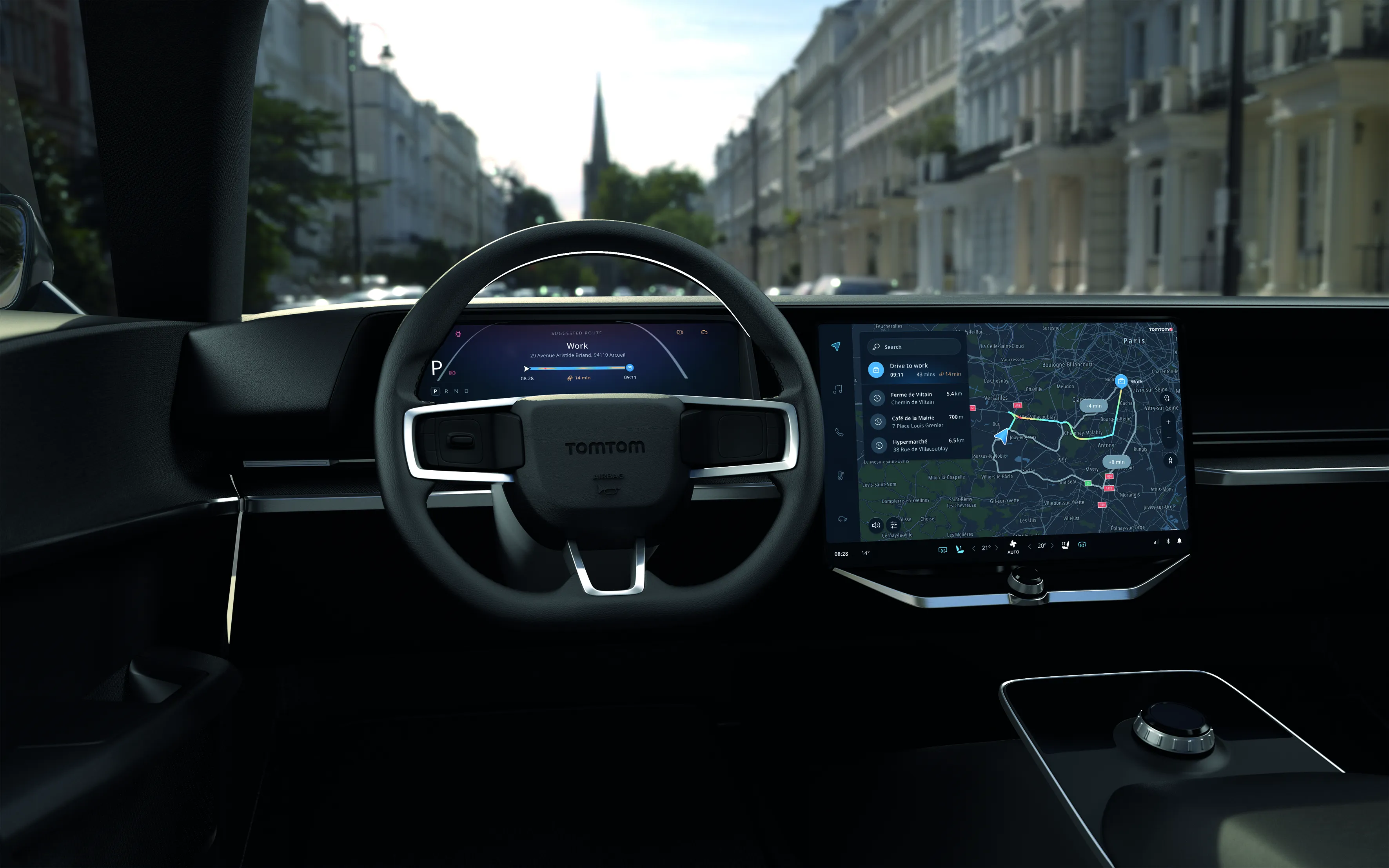According to a new report from Frost & Sullivan, the North and Latin American automotive navigation markets are on the cusp of a shift to connected navigation systems that offer real-time traffic information and local searching options. Navigation systems, whether by original equipment (OE) fitment, aftermarket, or portable navigation device (PND), are feeling the heat of competition from smartphone-based navigation applications. Low-cost smartphone replication technologies are helping navigation markets br
July 19, 2012
Read time: 3 mins
RSSAccording to a new report from Frost & Sullivan, the North and Latin American automotive navigation markets are on the cusp of a shift to connected navigation systems that offer real-time traffic information and local searching options. Navigation systems, whether by original equipment (OE) fitment, aftermarket, or portable navigation device (PND), are feeling the heat of competition from smartphone-based navigation applications. Low-cost smartphone replication technologies are helping navigation markets breach the perimeter of the mass market.
Frost & Sullivan’s Key Trends and Forecasts for the North American and Latin American Automotive Navigation and Telematics Services Market, expects the North American market size for navigation systems to be at 18.7 million units, smartphone navigation subscribers to be at 402.2 million, and telematics service subscribers installed base to be at 31.6 million by 2016. On the other hand, the Latin American market size for navigation systems are likely to be at five million units, smartphone navigation subscribers at 160.8 million, and telematics service subscribers installed base at 21.4 million by 2016.
PNDs were the pioneers of low-cost navigation but are gradually losing ground to smartphone-based navigation. To offset their market slide, PND manufacturers are venturing into OE business to provide low-cost in-dash solutions; however, this will pit them directly against Tier-1 suppliers.
"Smartphone-based navigation's success is compelling traditional OEMs to change their business models to incorporate smartphone content replication technologies like MirrorLink," said Frost & Sullivan research analyst Krishna Jayaraman. "The greater participation of consumer electronics vendors will enable automakers to better provide interfacing solutions to match product innovation."
Meanwhile, in the telematics market OEMs are likely to aim for standardisation, which could affect this market as it is either driven by a mandate or influenced by the success of major OEM participants. OEMs will be challenged to retain customers post the free trial period. In order to stay afloat, they have to offer value-added services.
Advanced technologies aim to present navigation in 'automotive grade,' which previously was considered unsafe. With high smartphone penetration, OEMs are also using smartphone interfacing solutions to differentiate their products in the market.
Despite the potential for growth, they must maintain competitive prices. Price-sensitive consumers will base their purchase decision on costs and will not be willing to pay for an application that is already available on their smartphones at attractive price points.
"While the North American market will stabilise soon with the introduction of newer business models, Latin America is still nascent and offers immense opportunities for all types of navigation systems," said Jayaraman.
PND's growth in Latin America is a prominent trend, while Brazil’s stolen vehicle tracking (SVT) mandate will make it one of the top competitors in the telematics market. Success in Latin America will be decided by how different navigation systems are marketed in that region.
Frost & Sullivan’s Key Trends and Forecasts for the North American and Latin American Automotive Navigation and Telematics Services Market, expects the North American market size for navigation systems to be at 18.7 million units, smartphone navigation subscribers to be at 402.2 million, and telematics service subscribers installed base to be at 31.6 million by 2016. On the other hand, the Latin American market size for navigation systems are likely to be at five million units, smartphone navigation subscribers at 160.8 million, and telematics service subscribers installed base at 21.4 million by 2016.
PNDs were the pioneers of low-cost navigation but are gradually losing ground to smartphone-based navigation. To offset their market slide, PND manufacturers are venturing into OE business to provide low-cost in-dash solutions; however, this will pit them directly against Tier-1 suppliers.
"Smartphone-based navigation's success is compelling traditional OEMs to change their business models to incorporate smartphone content replication technologies like MirrorLink," said Frost & Sullivan research analyst Krishna Jayaraman. "The greater participation of consumer electronics vendors will enable automakers to better provide interfacing solutions to match product innovation."
Meanwhile, in the telematics market OEMs are likely to aim for standardisation, which could affect this market as it is either driven by a mandate or influenced by the success of major OEM participants. OEMs will be challenged to retain customers post the free trial period. In order to stay afloat, they have to offer value-added services.
Advanced technologies aim to present navigation in 'automotive grade,' which previously was considered unsafe. With high smartphone penetration, OEMs are also using smartphone interfacing solutions to differentiate their products in the market.
Despite the potential for growth, they must maintain competitive prices. Price-sensitive consumers will base their purchase decision on costs and will not be willing to pay for an application that is already available on their smartphones at attractive price points.
"While the North American market will stabilise soon with the introduction of newer business models, Latin America is still nascent and offers immense opportunities for all types of navigation systems," said Jayaraman.
PND's growth in Latin America is a prominent trend, while Brazil’s stolen vehicle tracking (SVT) mandate will make it one of the top competitors in the telematics market. Success in Latin America will be decided by how different navigation systems are marketed in that region.








